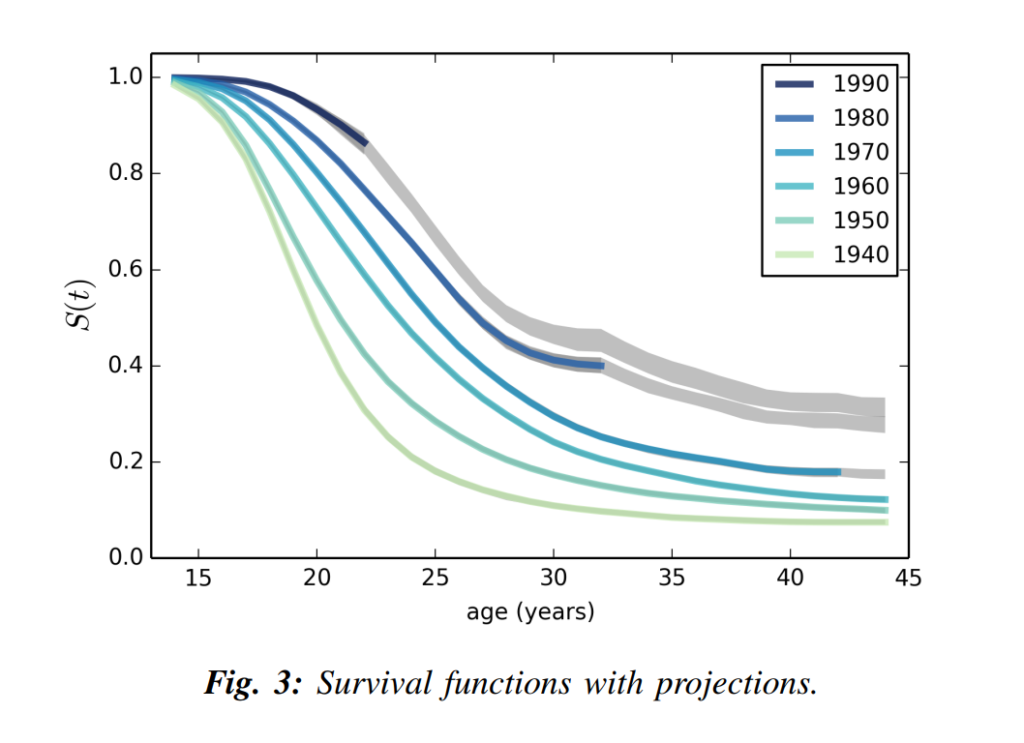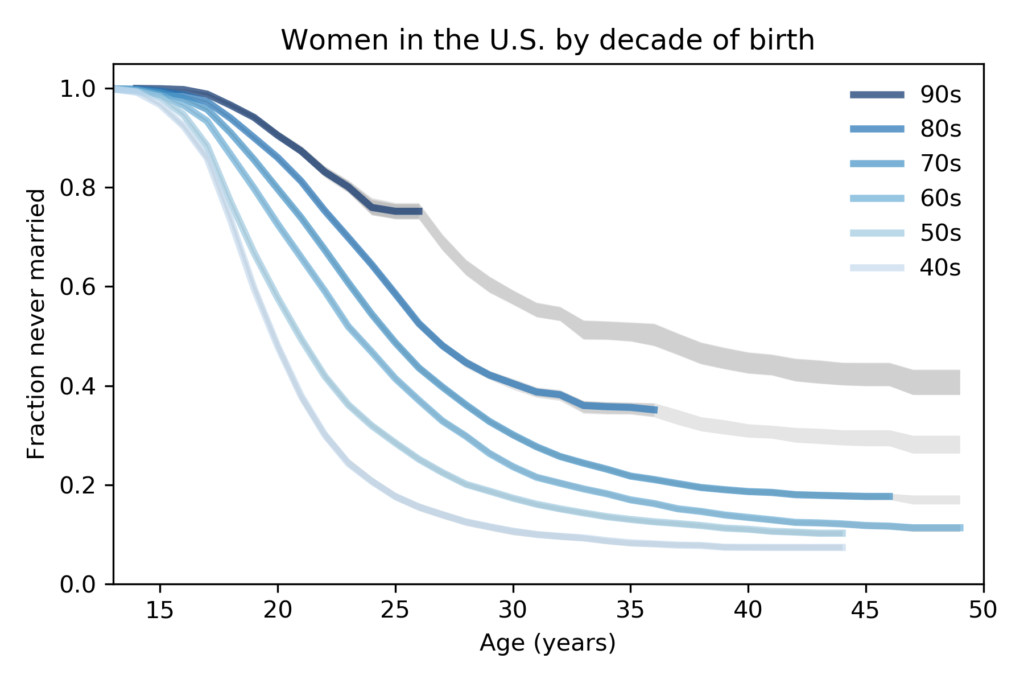The marriage strike continues
Last month The National Survey of Family Growth released new data from 5,554 respondents interviewed between 2015 and 2017. I’ve worked on several studies using data from the NSFG, so it’s time to do some updates!
In 2015 I gave a talk at SciPy called “Will Millennials Ever Get Married” and wrote a paper that appeared in the proceedings. I used data from the NSFG through 2013 to generate this plot showing marriage rates for women in the U.S. grouped by decade of birth:

The vertical axis, S(t), is the estimated survival curve, which is the fraction of women who have never been married as a function of age. The gray lines show projections based on the assumption that each cohort going forward will “inherit” the hazard function of the previous cohort.
If you are not familiar with survival functions and hazard functions, you might want to read the SciPy paper, which explains the methodology.
Now let’s see how things look with the new data. Here’s the updated plot:

A few things to notice:
- Age at first marriage has been increasing for decades. Median age at first marriage has gone from 20 for women born in the 1940s to 27 for women born in the 1980s and looks likely to be higher for women born in the 1990s.
- The fraction of women unmarried at age 44 has gone from 7% for women born in the 1940s to 18% for women born in the 1970s. And according to the projections I computed, this fraction will increase to 30% for women born in the 1980s and 42% for women born in the 1990s.
- For women born the 1980s and 1990s, the survival curves have been surprisingly flat for the last five years; that is, very few women in these cohorts have been married during this time. This is the “marriage strike” I mentioned in the SciPy paper, and it seems to be ongoing.
Because the marriage strike is happening at the same time in two cohorts, it may be a period effect rather than a cohort effect; that is, it might be due to external factors affecting both cohorts, rather than a generational change. For example, economic conditions might be discouraging marriage.
If so, the marriage
In my next post, I will show the results of this analysis for men.